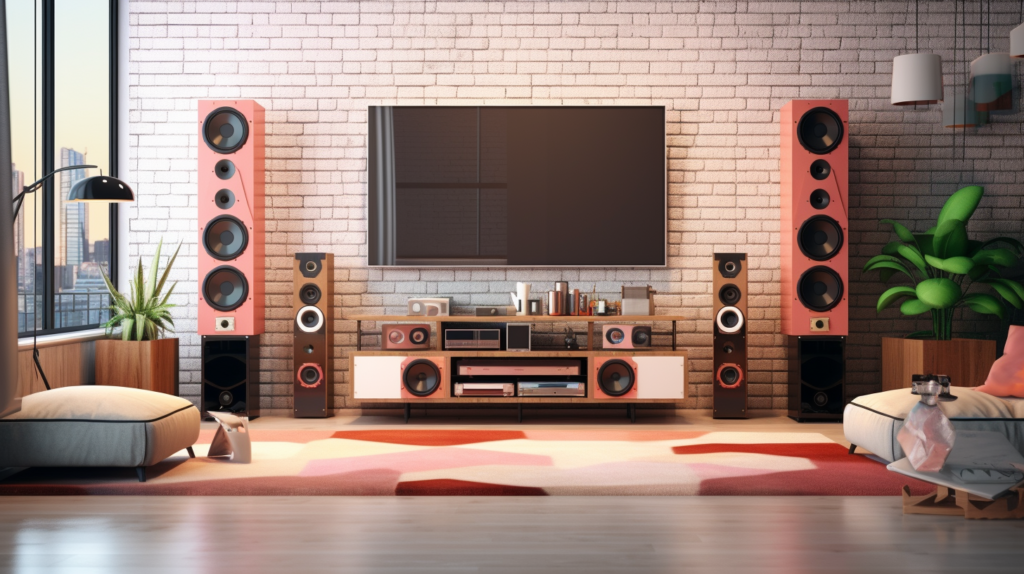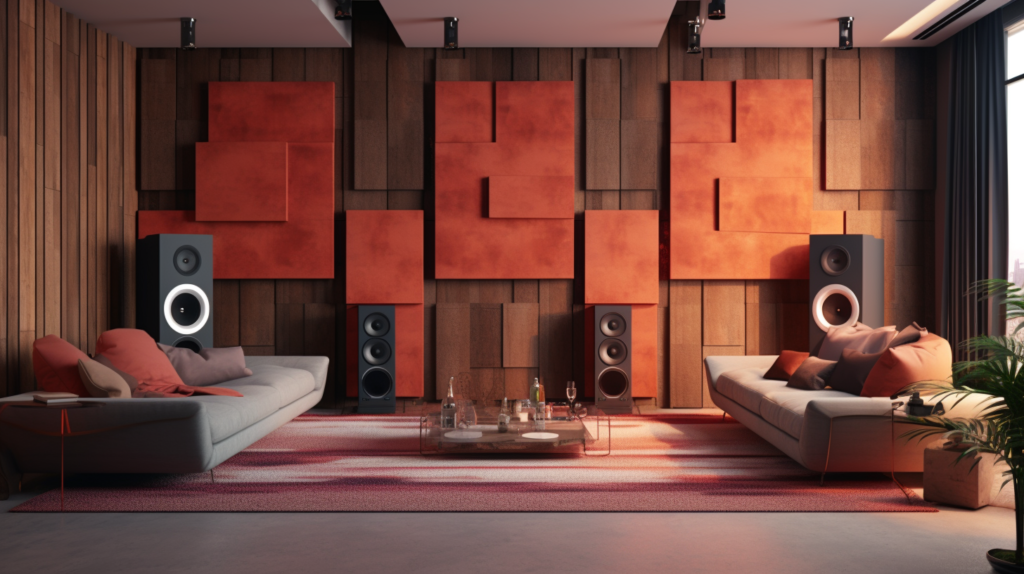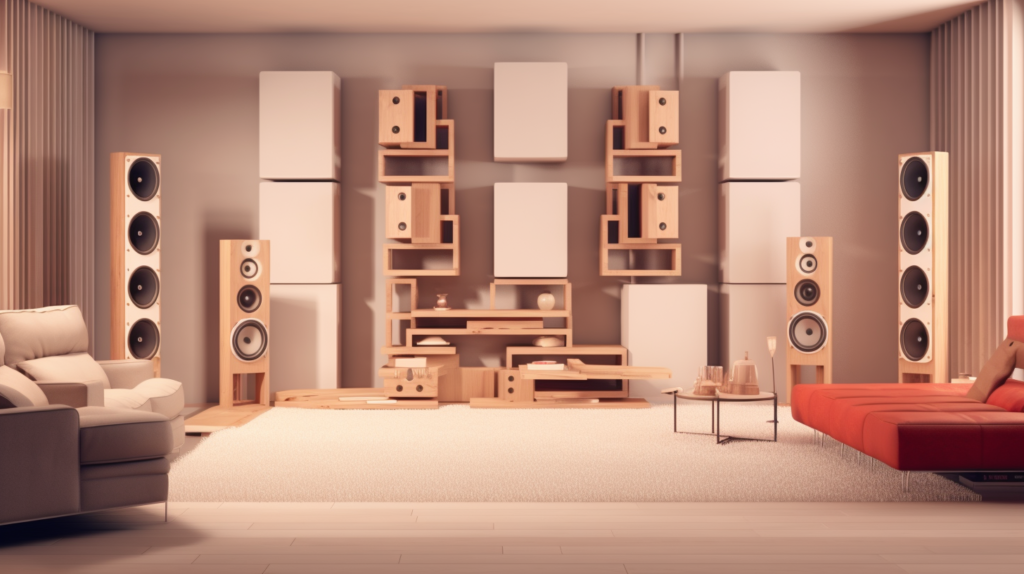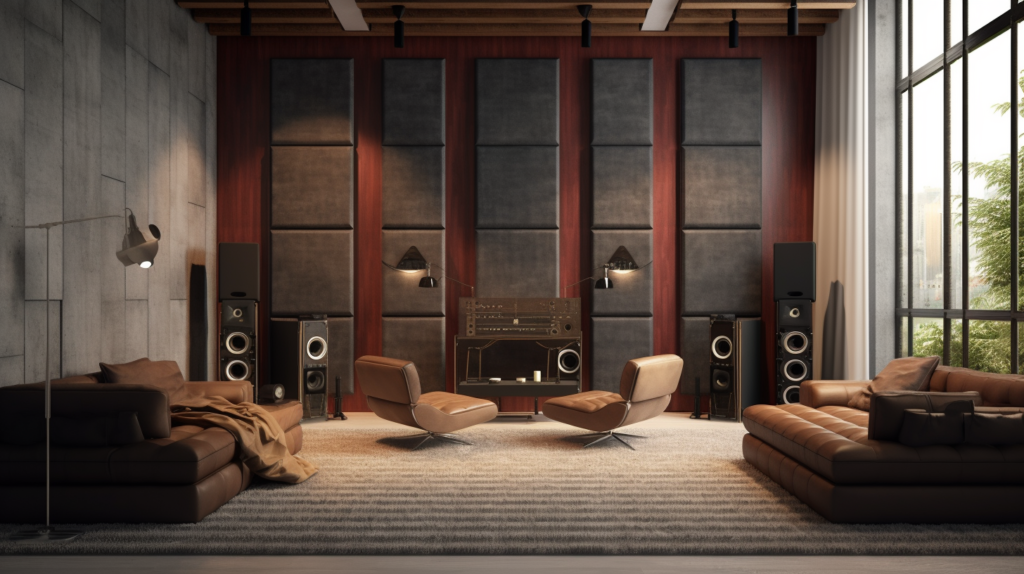You’ve just invested in a top-of-the-line audio system, expecting to be transported into a world of high-definition sound.
But instead, something’s off — the audio feels flat, lacking the immersive experience you were anticipating.
What could possibly be wrong?
The culprit might not be your speakers but the room itself. That’s where acoustic panels come into play.
These unsung heroes can dramatically enhance your audio experience, affecting everything from the crispness of dialogue in movies to the thump of bass in music.
If you’re scratching your head wondering how a piece of fabric on your wall can make such a big difference, you’re in for an enlightening read.
Ready to elevate your sound? Let’s dive in…
How Do Speakers Emit Sound and What Affects Its Quality?

Speakers are not just boxes that emit noise; they are intricately designed devices that convert electrical signals into sound.
The process involves drivers, which move back and forth to create pressure waves we perceive as sound.
However, these waves don’t travel in a vacuum. They interact with the room’s environment, including its size, shape, and the materials from which it’s made.
These factors collectively contribute to the room’s acoustics, which can dramatically affect the quality of sound you experience.
Hard surfaces such as concrete walls or hardwood floors tend to reflect sound waves.
This creates multiple pathways for sound to travel, leading to phase issues where the waves can either cancel each other out or amplify certain frequencies.
The result is often a muddled or distorted sound that lacks clarity and depth.
Soft materials, on the other hand, can absorb these sound waves, reducing reflections and offering a clearer, more focused sound.
This is where acoustic panels come into play. They can significantly alter how a room interacts with sound, providing a more controlled audio environment.
What Happens When You Don’t Use Acoustic Panels Behind Speakers?

Let’s assume you’ve just set up a brand new speaker system in your living room.
You play your favorite song, expecting to be blown away, but instead, you hear echoes, distortions, and maybe even a hollow sound that seems to lack richness.
This is what happens when sound waves are left to their own devices.
In an untreated room, these waves will bounce off walls, ceilings, and floors, creating a complex web of reflections that interfere with the original sound emanating from the speakers.
You’ll notice issues like echoing, where the sound seems to linger longer than it should.
This is particularly problematic in rooms with many hard surfaces, where sound waves can continue to bounce around indefinitely.
There’s also the risk of sound distortion. When reflected sound waves meet, they can interfere with each other.
This is known as phase interference, and it can make your music sound out of balance, with certain frequencies unnaturally amplified or muted.
Can Acoustic Panels Improve the Sound Quality of My Speakers?

The simple answer is yes, acoustic panels can significantly improve the sound quality of your speakers.
These panels are specifically designed to absorb sound waves, reducing the number of reflections in the room.
Reduced reflections mean fewer chances for echoes and phase interference, leading to a cleaner, more precise sound.
This can be particularly beneficial for dialogue clarity in movies, the intricacy of a classical music piece, or the nuances of vocals in a song.
Moreover, acoustic panels can enhance the emotional impact of music or movies.
By removing unwanted echoes and distortions, these panels allow the original sound to shine through, making for a more immersive experience.
Whether you’re a casual listener or an audiophile, the benefits are hard to ignore.
What Types of Acoustic Panels Should I Use Behind My Speakers?

There’s a variety of acoustic panels to choose from, each with its own set of benefits and drawbacks.
Foam panels, for example, are lightweight and relatively inexpensive but may not offer the best performance across all frequency ranges.
Fabric-covered panels, often made of fiberglass, offer excellent sound absorption but can be quite expensive. They also come in a range of colors and designs, allowing for a more customized look.
One highly effective and increasingly popular option is polyester acoustic panels.
These panels are not only effective at absorbing sound across a broad range of frequencies, but they are also environmentally friendly, often made from recycled materials.
Polyester acoustic panels are also highly versatile when it comes to design options.
They can be found in various colors, textures, and patterns, making it easier to integrate them into any room decor.
This makes them a favorite choice for those who want a combination of aesthetics and performance.
How Do I Install Acoustic Panels Behind My Speakers?

Installing acoustic panels is not just about slapping them on the wall behind your speakers. Effective placement is key to getting the most out of your acoustic treatment.
The goal is to strategically place the panels where they will absorb the most sound, reducing unwanted reflections and resonances.
Start by placing panels directly behind your speakers, as this is usually where the most direct sound waves will hit.
From there, you can expand to other areas of the room, such as the side walls and even the ceiling, using guides on optimal placement for further reference.
If the idea of drilling holes in your walls doesn’t appeal to you, some companies offer stand-mounted panels that can be positioned behind your speakers. Alternatively, you can hire professionals who can assess your room’s acoustics and determine the best placement for you.
Do I Need Acoustic Panels for All Types of Speakers?

One of the most common questions people have is whether acoustic panels are necessary for all types of speakers.
While the basic principles of sound reflection and absorption apply to all speakers, the extent to which acoustic panels are beneficial can vary.
For smaller speakers, like bookshelf models that are often placed in smaller rooms, the number of panels needed may be less.
On the other hand, larger speakers, like floor-standing models in a spacious living room, can benefit significantly from a more extensive setup.
How Many Acoustic Panels Do I Need for Optimal Sound?

The number of panels you’ll need can vary based on several factors, including room size, speaker power, and individual preferences.
However, a good starting point is the 30% rule. This guideline suggests covering approximately 30% of your room’s wall surface area with acoustic panels for effective sound treatment.
If you’re interested in diving deeper into the specifics of acoustic treatment, we have a comprehensive guide that covers everything from room analysis to panel types.
This article provides detailed recommendations based on various room sizes, shapes, and acoustic challenges.
For those interested in a more detailed exploration, consider our comprehensive guide to acoustic treatment, which covers everything from room analysis to panel types and offers detailed recommendations based on various room sizes, shapes, and acoustic challenges.
Conclusion
Understanding how speakers and their environment interact is crucial for optimal sound quality.
Acoustic panels, particularly versatile options like polyester acoustic panels, can significantly elevate your listening experience by absorbing unwanted sound reflections.
Don’t compromise on sound; consider investing in acoustic panels to bring out the best in your speakers.
Frequently Asked Questions (FAQ)
How Thick Of Acoustic Panel Behind Speakers
When it comes to placing acoustic panels behind speakers, thickness is an important consideration.
However, if you’re using high-quality, dense materials like polyester acoustic panels, a 9mm thickness is often sufficient to effectively absorb and manage sound, offering an optimal balance of performance and aesthetics.
